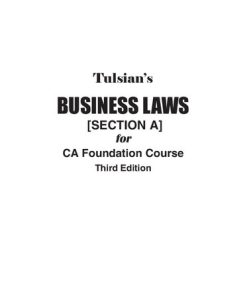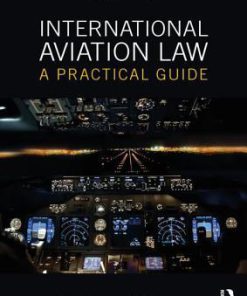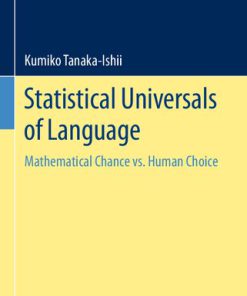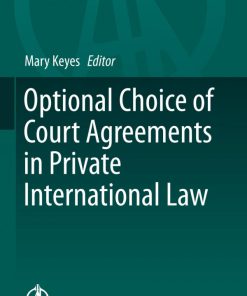Choice of Law 1st Edition Symeon 0190496746 9780190496746
$50.00 Original price was: $50.00.$25.00Current price is: $25.00.
This completed downloadable of Choice of Law 1st Edition Symeon C. Symeonides

Instant downloaded Choice of Law 1st Edition Symeon C. Symeonides pdf docx epub after payment.
Product details:
- ISBN 10: 0190496746
- ISBN 13: 9780190496746
- Author: Symeon C. Symeonides
Choice of Law provides an in-depth sophisticated coverage of the choice-of-law part Conflicts Law (or Private International Law) in torts, products liability, contracts, forum-selection and arbitration clauses, insurance, statutes of limitation, domestic relations, property, marital property, and successions. It also covers the constitutional framework and conflicts between federal law and foreign law.The book explains the doctrinal and methodological foundations of choice of law and then focuses on its actual practice, examining not only what courts say but also what they do. It identifies the emerging decisional patterns and extracts predictions about likely outcomes.
Table of contents:
1. Introduction
I. Scope and Coverage
II. Nomenclature
A. Conflict of Laws
B. Private International Law
III. Choice of Law
A. Choice of Law and Jurisdiction
B. Choosing versus Blending Laws
C. The Substantivist Method
D. Arbitration and Anational Law
IV. Categories of Conflicts
V. Federal and State Laws and Courts
VI. Plurilegalism in a Single Country
VII. Selected General Bibliography
Part One The Federal Framework
2. Federalism and Choice of Law
I. Introduction
II. The Division of Lawmaking Competence between the Federal and State Governments
III. Federal Limitations on State Choice of Law
A. The Four Principal Constitutional Clauses
B. The Full Faith and Credit Clause
1. Text and Purpose
2. Legislative History
3. Scope
4. Full Faith and Credit to Judgments
C. The Full Faith and Credit and Due Process Clauses
1. Early Jurisprudence
2. From Interventionism to Laissez-Faire
3. Constitutional Controls of Jurisdiction and Choice of Law
D. Privileges and Immunities
E. Foreign Affairs
1. Federal versus State Competence
2. Executive versus Judicial Function
IV. Law Applied in Federal Courts
A. In General
B. Law Applied in Diversity Cases
1. Substantive Law
2. Procedural Law
3. Choice of Law
Part Two History, Doctrine, and Methodology
3. Early Choice-of-Law Doctrine and the Traditional System
I. Introduction
II. Choice-of-Law Doctrine before the Twentieth Century
A. From Ancient Greece to Medieval Italy
B. Bartolus, Statutists, and Unilateralism
C. The Dutch Commentators’ and Comity
D. Wächter and Savigny: From Unilateralism to Multilateralism
E. The Dearth of English Conflicts Doctrine
F. Early American Conflicts Law: Joseph Story
III. Joseph H. Beale and the Traditional Choice-of-Law System
A. Joseph H. Beale
B. Territoriality
C. Vested Rights
IV. The First Conflicts Restatement
A. Some of the Restatement’s Flaws
B. The Restatement’s Contributions
C. Some of the Restatement’s Specific Rules
1. Torts and Contracts
2. Property, Marital Property, and Successions
D. The Restatement’s Following
4. The Structure of Choice-of-Law Rules and the Operation of the Choice-of-Law Process
I. Introduction
II. The Choice-of-Law Rule and Its Components
III. Characterization
IV. Localization
V. The Application of the Designated Law and Its Exceptions
A. Substance versus Procedure
B. Renvoi
C. The Public Policy Exception
D. The Penal-Law Exception
E. The Foreign Tax-Law Exception
VI. Domicile
VII. Judicial Notice and Proof of Foreign Law
5. The Choice-of-Law Revolution: Theoretical Groundwork
I. Introduction
II. The First Critics
A. Walter W. Cook
B. David F. Cavers
III. A Frontal Attack: Brainerd Currie
A. Anti-rulism
B. The “Domestic Method”
C. The Concept of Governmental Interests
D. Currie’s Assumptions about State Interests
E. False, True and In-Between Conflicts
F. Forum Favoritism
G. Currie’s Contribution
H. The Addendum of Comparative Impairment
IV. Result Selectivism: Robert A. Leflar and His “Better Law” Approach
V. Functional Analyses
A. Arthur T. von Mehren and Donald T. Trautman
B. Russell Weintraub’s Consequences-Based Approach
VI. Synthesis and Transition: Willis Reese and the Restatement (Second)
A. Section Six
B. The “Most Significant Relationship”
C. Rules
D. Presumptive Rules
E. Pointers
F. Ad Hoc Analysis
VII. Contemporary Conflicts Scholarship
6: The Judicial Revolution in Torts and Contracts
I. Introduction
II. The Retreat of the Lex Loci Delicti Rule
A. Babcock v. Jackson
1. Issue-by-Issue Analysis
2. Dépeçage
3. The Distinction between Loss-Distribution and Conduct-Regulation Issues
4. Policy Analysis
B. After Babcock
III. The Retreat of the Lex Loci Contractus Rule
A. Barber, Auten, and the Center of Gravity Approach
B. After Auten
IV. The Remaining Traditional States
7. The Choice-of-Law Revolution Today: Methodological Pluralism
I. Introduction
II. Methodological Pluralism
A. Methodological Camps
B. Caveats
C. The Relative Inconsequence of Methodology
III. The Restatement (Second)
IV. Significant-Contacts Approaches
V. New York
A. Tort Conflicts
1. Neumeier
2. Schultz
3. Cooney
4. Subsequent Cases
B. Contract Conflicts
VI. Currie-Based Approaches
A. Modified Interest Analysis
B. Comparative Impairment
C. The Lex Fori Variant
VII. The Better-Law Approach
A. Early Cases: The Biases
B. Recent Cases: Eclecticism and De-emphasis of the Better-Law Factor
VIII. “Combined Modern” Approaches
Part Three Choice of Law in Practice
8. Torts
I. Introduction
II. The Distinction between Conduct-Regulation and Loss-Distribution
A. The Origins and Meaning of the Distinction
1. Antecedents
2. Babcock and Schultz
3. Legislative Sanction
a. American Codifications
b. Foreign Codifications
4. Examples from Each Category
a. Conduct-Regulating Rules
b. Loss-Distributing Rules
B. The Validity of the Distinction: Separating Purpose and Effect
C. The Manageability of the Distinction: Identifying the Primary Purpose
D. The Practical Use of the Distinction
III. Loss-Distribution Tort Conflicts
A. Introduction
B. Defining the Typical Patterns
1. The Pertinent Contacts
2. The Content of the Involved Laws
3. The Typical Fact-Law Patterns in Conflicts Involving Two States
C. Common-Domicile Cases Arising from Torts in Another State
1. Pattern 1: The Babcock Pattern
2. Pattern 2: The Converse-Babcock Pattern
3. Summary
4. A Common-Domicile Rule
a. A Descriptive Rule
b. Statutory and Quasi-Statutory Rules
c. Foreign Codifications
5. Cases Analogous to Common-Domicile Cases
a. Parties Domiciled in States with Same Law
b. Parties to a Preexisting Relationship
D. Split-Domicile Cases—Intrastate Torts
1. Direct or True Conflicts
a. Pattern 3: Split-Domicile Cases in Which the Conduct, the Injury and the Tortfeasor’s Domicile Are in a State Whose Law Favors the Tortfeasor
b. Pattern 4: Split-Domicile Cases in Which the Conduct, the Injury and the Victim’s Domicile Are in a State Whose Law Favors the Victim
2. Inverse Conflicts or No-Interest Cases
a. Pattern 5: The Neumeier Pattern
b. Pattern 6: The Hurtado Pattern
c. Summary and Rule
E. Split-Domicile Cases—Cross-Border Torts
1. Pattern 7: Cases in Which the Conduct and the Tortfeasor’s Domicile Are in a State Whose Law Favors the Tortfeasor, while the Injury and the Victim’s Domicile Are in a State Whose Law Favors the Victim
2. Pattern 8: Cases in Which the Conduct and the Tortfeasor’s Domicile Are in a State Whose Law Favors the Victim, while the Injury and the Victim’s Domicile Are in a State Whose Law Favors the Tortfeasor
3. Summary and Rules
F. Split-Domicile Conflicts Involving Three States
G. Summary and Rules for Loss-Distribution Conflicts
IV. Conduct-Regulation Conflicts
A. Introduction
B. Generic Conduct-Regulation Conflicts
1. The Pertinent Contacts and Typical Patterns
2. Pattern 9: Conduct and Injury in Same State
3. Pattern 10: Conduct and Injury in Different States That Prescribe the Same Standards of Conduct
4. Pattern 11: Conduct in State with Higher Standard and Injury in State with Lower Standard of Conduct
5. Pattern 12: Conduct in State with Lower Standard and Injury in State with High Standard
6. Summary and Rule for Conduct-Regulation Conflicts
C. Punitive-Damage Conflicts
1. Introduction
2. The Pertinent Contacts and Typical Patterns
3. Pattern 13: All Three Contacts
4. Pattern 14: State(s) of Defendant’s Domicile and Conduct Impose(s) Punitive Damages
5. Pattern 15: State(s) of Conduct and Injury Impose(s) Punitive Damages
6. Pattern 16: State(s) of Injury and Defendant’s Domicile Impose(s) Punitive Damages
7. Pattern 17: Only the Defendant’s Home-State Imposes Punitive Damages
8. Pattern 18: Only the State of Conduct Imposes Punitive Damages
9. Pattern 19: Only the State of Injury Imposes Punitive Damages
10. Pattern 20: None of the Above (Victim’s Domicile or Domicile)
11. Summary and Rule
V. Conclusions
9. Products Liability
I. Introduction
A. General
B. The Pertinent Contacts
1. The List
2. Qualifications
C. The Content of the Contact-States’ Laws
D. Typical Patterns of Product Conflicts
II. Direct Conflicts: Cases in Which Each State’s Law Favors the Local Litigant
A. Cases Applying the Pro-Defendant Law of a Defendant-Affiliated State
B. Cases Applying the Pro-Plaintiff Law of a Plaintiff-Affiliated State
1. Choice Based on Three Contacts
2. Choice Based on Two Contacts
a. Plaintiff’s Domicile and Injury
b. Injury and Product Acquisition
c. Plaintiff’s Domicile and Product Acquisition
3. Choice Based on a Single Contact
a. Place of Injury
b. Product Acquisition
c. Plaintiff’s Domicile
III. Inverse Conflicts: Cases in Which Each State’s Law Favors a Litigant Affiliated with the Other State
A. Cases Applying the Pro-Plaintiff Law of a Defendant-Affiliated State
B. Cases Applying the Pro-Defendant Law of a Plaintiff-Affiliated State
1. Choice Based on Three Contacts
2. Choice Based on Two Contacts
a. Plaintiff’s Domicile and Injury
b. Plaintiff’s Domicile and Product Acquisition
c. Injury and Product Acquisition
3. Choice Based on a Single Contact
IV. Latent Injuries and the Issue of Time
V. General Observations
A. Summary
B. The Role of State Policies and Interests
C. The Significance of Contacts
D. Choice-of-Law Rules
1. Contacts-Based Rules
2. Favor Laesi Rules
10. Contracts
Introduction
Part One. Contracts without Choice-of-Law Clauses
I. The Traditional Approach
II. Statutory Rules
III. The Uniform Commercial Code (U.C.C)
IV. The CISG
V. The Restatement (Second)
A. Section 188
B. Particular Contracts
C. Particular Issues
D. Application
E. Samples from the Cases
VI. Other Modern Approaches
Part Two. Contractual Choice of Law (Party Autonomy)
I. Introduction
A. The Principle, Its History and Universality
B. The Two Restatements
1. The First Restatement’s Rejection
2. The Second Restatement’s Endorsement
C. The Uniform Commercial Code
II. The General Scope of Party Autonomy: A First Look
III. Requirements and Limitations
A. The Distinction between Waivable and Non-waivable Rules
B. Basis for the Parties’ Choice: Substantial Relationship or Reasonable Basis
C. Substantive Limitations: Public Policy
1. Which State’s Public Policy? (The Lex Limitativa)
a. Lex Fori Systems
b. Lex Causae Systems
c. Hybrid Systems
2. Which Level of Public Policy?
IV. The Choice-of-Law Agreement and Its Modalities
A. Which Law Determines Existence and Validity
1. Capacity
2. Consent and Formation
3. Form
B. Timing of Choice or Change
C. Multiple or Partial Choice
D. Choice of an Invalidating Law
V. The Scope of the Choice-of-Law Clause
A. Introduction
B. Exempted Contracts or Contractual Issues
C. Noncontractual Issues: Torts
1. Introduction
2. The Case Law
3. Critique
D. Procedural Issues
E. Choice of Conflicts Law
F. Choice of Nonstate Norms
VI. Party Autonomy and Presumptively Weak Parties
A. Introduction
B. Comparative Excursus: The Civil Law Model
C. The American Model
1. Introduction
2. Employment Contracts
3. Consumer Contracts
4. Franchise or Distributorship Contracts
D. Conclusions
11. Forum Selection Clauses and Arbitration Clauses
I. Introduction
II. Forum Selection Clauses
A. Introduction
B. Which Law Governs Forum Selection Clauses?
1. Scenario 1: Actions Filed in the Chosen Court
2. Actions Filed in a Court Not Chosen (the “Seized” Forum)
a. Scenario 2: Contracts without Choice-of-Law Clauses
b. Scenario 3: Contracts with Choice-of-Law Clauses
(1) Cases Applying Forum Law
(2) Cases Applying the Chosen Law
(3) Distinguishing between Interpretation and Enforceability
3. Summary and Critique
C. Separability of Forum Selection Clause
III. Arbitration Clauses
A. Domestic Interstate Arbitration
1. Introduction
2. The Supreme Court’s Strong Pro-Arbitration Stance
3. The Lower Courts’ Efforts to Level the Playing Field
a. Employment Contracts
b. Consumer Contracts
4. Separability of Arbitration Clause
B. Foreign Arbitration
1. The Supreme Court’s Jurisprudence
2. Law Governing the Arbitration Agreement
a. Contractual Capacity
b. Other Issues of Formation of the Arbitration Agreement
c. Issues of Scope, Validity, and Enforceability (Other than Arbitrability)
d. Arbitrability
e. Public Policy
3. Law Applicable in Arbitration
12. Insurance Conflicts
I. Introduction
II. Automobile Insurance
III. Commercial Liability Insurance
A. Coverage for Environmental Pollution
1. The “Uniform Contract Interpretation” Approach
2. The “Site-Specific” Approach
B. Products Liability Insurance
C. Insurability of Punitive Damages
IV. Life Insurance
13. Statutes of Limitation
I. Introduction
II. The Traditional American System
A. The Basic Approach
B. Legislative Exceptions: Borrowing Statutes
C. Judicial Exceptions
D. Current Status
III. Modern Approaches
A. The New Uniform Act
B. New Judicial Approaches
C. The New Revision of the Restatement (Second)
1. The Text
2. Representative Cases
3. The Louisiana and Puerto Rico Codifications
IV. Summary of State Practices
V. Choice-of-Law Clauses and Statutes of Limitations
VI. Supreme Court Cases
VII. It Is Not an “Either, Or”
14. Status and Domestic Relations
I. Introduction
II. Marriage
A. Introduction: Divergence and Convergence
B. Validity
C. Incidents
III. Same-Sex Marriages
A. Introduction
B. The Defense of Marriage Act (DOMA) and Its Demise
1. Vertical DOMA
2. Horizontal DOMA
3. Interstate Recognition of Same-Sex Relationships
IV. Divorce
V. Child Support and Custody
A. Child Support
B. Child Custody
1. Interstate Cases
2. International Cases
VI. Legitimacy and Filiation
VII. Adoption
15. Property, Marital Property, and Successions
I. Property
A. Immovables
B. Movables
1. In General
2. Stolen Movables: Antiquities or Artwork
a. The Problem and the Challenge
b. Antiquities
c. Artistic Property
d. Multiple Situses and the Conflit Mobile
e. A Proposed Rule
f. Annotations to the Rule
(1) The Starting Point: The Lex Rei Sitae Originis
(2) A Rule for True Conflicts
(3) The State of the “Materially Closer Connection”
(4) The Good Faith Proviso
(5) The Time Element: The Discovery Rule
(6) The Discovery Rule and Even-Handedness
(7) The Discovery Rule and the Forum’s Statute of Limitation
(8) The Discovery Rule and Non-forum Substantive Law
g. Methodological Comments
(1) Bridging the Common Law and Civil Law Approaches
(2) Substantive Law Solutions to Choice-of-Law Dilemmas
II. Marital Property
A. Substantive Law
B. The Conflicts Problem
C. The Problem of Moving Spouses
1. From a Separate-Property State to a Community- Property State
a. The Traditional Approach
b. The Pure Borrowed-Law Approach
c. The Pure Quasi-community Property Approach
d. The Louisiana Approach
2. From a Community-Property State to a Separate-Property State
3. Recent Cases
a. Marital Property Agreements
b. Marital Property and Talaq
c. Marital Property and Taxes
d. Out-of-State Immovables
III. Successions
A. “Unity” or “Scission” of the Estate
B. The Two Restatements
C. Legislative Interventions
1. Testamentary Form
2. Bolder Interventions
3. Testator’s Choice
16. Conflicts between Federal Law and Foreign Law
I. Introduction
II. Congressional Power and Its Limits
A. International Law Limits
B. Constitutional Limits
III. Statutes Expressly Applicable to Foreign Events or Persons
A. Statutes Applicable to U.S. Citizens Present or Acting Abroad
B. Statutes Applicable to U.S. Citizens Injured Abroad
C. Statutes Applicable to Persons Acting under Foreign Law
D. Statutes Applicable to the High Seas
E. Statutes Applicable to Aliens while in the United States
F. Interpretation
IV. Statutes That Are Silent or Ambiguous on Their Territorial Reach
A. Introduction
B. The Territorial Presumption: The Early Version
C. Foreign Ships and Their Internal Affairs
D. Bilateralism: Lauritzen and Maritime Conflicts
E. The “Effects Doctrine”: Foreign Conduct with Domestic Effects
F. The Territorial Presumption, Again
G. The “Effects Doctrine,” Again
H. The Effects Doctrine Tempered by Internationalism
I. Domestic Conduct with Foreign Effects and The “Headquarters Doctrine”
J. The Territorial Presumption Returns in Full Force
1. The Securities Exchange Act
2. The Alien Tort Statute (ATS)
a. Sosa
b. Kiobel
c. Post-Kiobel Cases
V. A Few Remarks on Methodology
Part Four Conclusions
17. The Next Step
I. Introduction
A. Where Are We?
B. The Revolutionary Status Quo
C. The Next Step: Exit and Consolidation
D. The Medium: Option One—National Legislation
II. Option Two: State Legislation
A. The Louisiana Codification
1. Goal, Catchphrase, and General Approach
2. The Method
3. Implementation: Balancing Certainty with Flexibility
a. Alternative-Reference Rules
b. Soft Connecting Factors
c. Escape Clauses
d. Rules and “Approaches”
e. Issue-by-Issue Analysis
4. Operation
B. The Puerto Rico Draft Code
C. The Oregon Codification
1. Contracts
2. Torts
a. General Rules
b. The General and Residual Approach
c. Balancing Certainty with Flexibility
III. Option Three: A New Conflicts Restatement
A. An End and a Beginning
B. Coverage
C. Filling the Gaps and Updating the Content of the Restatement (Second)
D. Breaking the Situs Taboo
E. Finding the Golden Medium between Certainty and Flexibility
People also search:
choice of law clause
choice of law provision
choice of law rules
choice of law clause example
california choice of law rules
You may also like…
Business & Economics - Accounting
Tulsian’s Business Law for CA Foundation 3rd Edition by P C Tulsian 9353163153 9789353163150
Romance - Other Romance Categories
Without Choice 1st Edition by Elizabeth Andrews ISBN 173669460X 9781736694602
Politics & Philosophy
Technique - Transport
International Aviation Law A Practical Guide Ronald I C Bartsch
Mathematics
Jurisprudence & Law - Legal Theory & Philosophy
Optional Choice of Court Agreements in Private International Law Mary Keyes
Biology and other natural sciences - Ecology
Comics & Graphic Novels - Science Fiction
Nemesis Earth Weapons of choice Book 8 The epic finale 1st Edition Nick Snape












